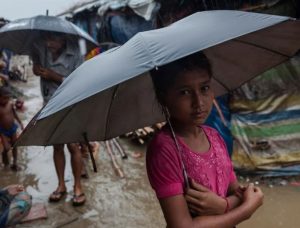Andaman Sea the latest deadly refugee route
Increasing numbers of Rohingya refugees are setting out on dangerous voyages across the Andaman Sea, according to a new report from the UN refugee agency UNHCR .
From January to November 2022, 1,920 people, mostly Rohingya, travelled by sea from Burma and Bangladesh, compared to only 287 in 2021.
And so far in 2022, 119 people have died during the crossing.
Bangladesh is home to almost a million Rohingya refugees, the majority of whom live in huge refugee camps in Cox’s Bazar and Teknaf, where many of the boats are believed to have departed from.
The mostly Muslim Rohingya have long suffered discrimination and persecution in Myanmar and more than a million people have fled since a brutal military crackdown in 2017. The majority of Rohingya have gone to neighbouring Bangladesh or to other Muslim countries like Malaysia and Indonesia.
Aid agencies say many of the Rohingya are fleeing dire conditions in the camps.
Recently, several boats were adrift without power after their engines failed. One boat had more than 200 people aboard.
Relatives of some of those aboard told the NGO Human Rights Watch: “The boat’s engine has broken down, so they are drifting without sufficient food and water. Some have already died”.
 The UNHCR and Human Rights Watch have spoken out about the urgency of the situation and have repeatedly called on the Thai government and other neighbouring states to help the refugees.
The UNHCR and Human Rights Watch have spoken out about the urgency of the situation and have repeatedly called on the Thai government and other neighbouring states to help the refugees.
A spokesman for HRW said the Rohingya were choosing to go to seas “because it’s better than the alternatives; their current situation, or going back to Myanmar”.
“Many Rohingyas leave Bangladesh, where conditions are very difficult, but they don’t know when they can return to Myanmar, where they risk being arrested. Many young people who grew up in the camps just want to start living, so they take a gamble on their lives and go to sea, despite the uncertainty. They do it because it’s better than their current situation or going back to Myanmar,” he said.
Five years ago Myanmar’s military launched a violent crackdown that sparked the exodus of as many as 800,000 Rohingya refugees to neighbouring Bangladesh.
Today, as many as one million mostly Muslim Rohingya still live in cramped, under-resourced refugee camps in southern Bangladesh.
The US has formally declared the persecution of Rohingya by Myanmar’s military a genocide but five years after the first outrages were committed later, conditions in the camps have worsened.
In late August 2017, more than 700,000 Rohingyas fled the military campaign of ethnic cleansing in Rakhine State, joining about 300,000 who fled earlier crackdowns and were already living in the sprawling network of camps in neighbouring Bangladesh.
Five years later, they’re still struggling to obtain even the most basic necessities, like food, and there is little hope things will improve.
About half of the Rohingya refugees in the camps at Cox’s Bazar are children.












